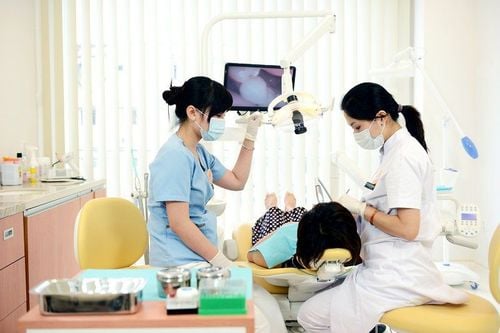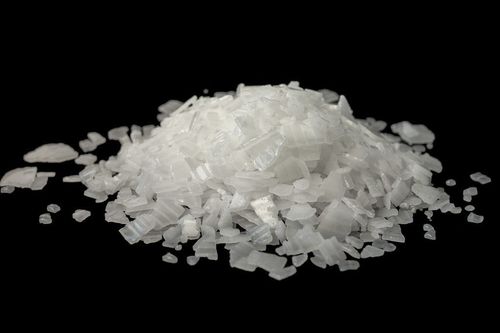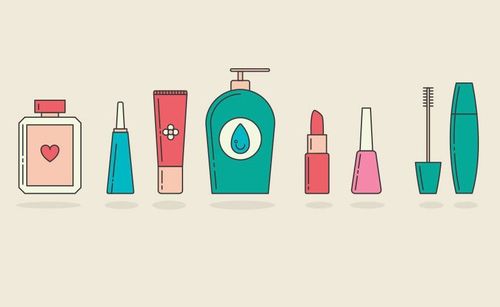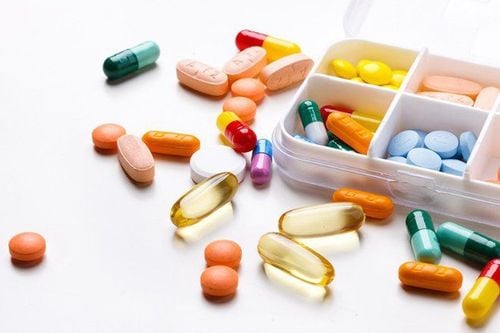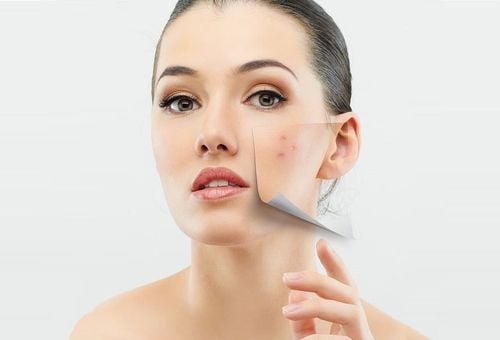This is an automatically translated article.
Most ingredients in makeup are safe, but some can be harmful to the body and the environment. This article will discuss the points to be aware of in toxic cosmetic ingredients and how to find alternatives to make it safer for users.
1. Are cosmetics really safe for health?
In the United States, there is no law that requires the Food and Drug Administration (FDA) to approve cosmetics. This means that in addition to color additives, cosmetics can contain a number of dangerous chemicals that are not regulated. When we use cosmetics, the skin absorbs chemicals and then they can enter the bloodstream. In particular, anyone can inhale or ingest certain cosmetics, such as lip products.
Some ingredients in makeup may contain ingredients associated with medical conditions. Some concerns that cosmetics can harm the body such as cancer, endocrine disorders, affect hormone production in the body, growth retardation and cause neurological problems.
2. List of harmful cosmetic ingredients
Here are the harmful ingredients in cosmetics that you should avoid using:
2.1. Talc can cause cancer In 2019, the FDA advised consumers to avoid certain cosmetic products containing asbestos and talc. We can find talcum powder in various makeup products, including blush, eyeshadow, and powder. It works within makeup to absorb moisture, create a matte finish, and prevent makeup from clumping. However, talcum powder can be hazardous to health and it can expose the body to asbestos. Both talc and asbestos are naturally occurring minerals in the earth, they often occur close together. Asbestos is known to be a chemical that can cause cancer.
2.2. Triclosan is a toxic cosmetic ingredient Triclosan is also a toxic ingredient in cosmetics and it can be found in some over-the-counter cosmetics. Some manufacturers add it to it to reduce the risk of bacterial infection. According to the FDA, high levels of triclosan can affect thyroid hormones and contribute to antibiotic resistance. However, scientists still need more evidence to determine the exact effects of triclosan on human health. Triclosan is currently banned for skin care products sold in some places.
2.3. Lead is a toxic cosmetic ingredient. Cosmetic eye products containing kohl have a high level of lead, a heavy metal that is harmful to the body. Any eye products that contain Kohl, Kajal, al-Kahal, surma, tiro, tozali, kwalli are considered hazardous cosmetic ingredients and are on the FDA's list of illegal color additives. .
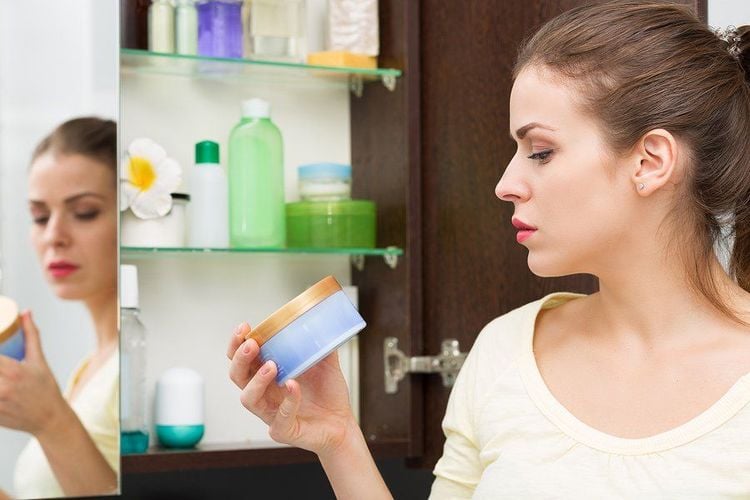
Tozali, kwalli là những thành phần mỹ phẩm độc hại.
2.3. Mercury and thimerosal Mercury is a heavy metal that is harmful to the body and it is also a toxic cosmetic ingredient. Skin lighteners can contain mercury, which affects the nervous system, damages the kidneys, and harms a developing fetus. Thimerosal is a preservative that occurs in cosmetics and contains mercury.
2.4. Phthalates are very toxic Phthalates are found in some nail polishes, hairspray, as well as perfumes and many skin-cleansing products. Phthalates can upset hormone balance, especially those that work together with estrogen, such as testosterone. Phthalates have been linked to breast cancer due to certain changes in estrogen levels.
2.5. Parabens are cosmetic ingredients to avoid Parabens are often used as preservatives in many cosmetics. Parabens can appear on cosmetic labels under names such as: Methylparaben, propylparaben, ethylparaben, butylparaben. Parabens are commonly found in makeup, moisturizers, hair products, and shaving foams. Although parabens will only act as a weak form of estrogen, it is still strong enough to cause breast cancer cells to grow and enter the body through the skin. This is due to an imbalance of estrogen, which causes a certain type of breast cancer, known as hormone receptor-positive breast cancer.
2.6. Formaldehyde and chemicals that release formaldehyde over a certain period of time are commonly found in cosmetics, lotions, shampoos, shower gels, nail polishes, and hair straightening products. Formaldehyde can cause allergic reactions as well as eye irritation and affect the respiratory system. Some studies on laboratory animals have also shown that this chemical is linked to cancer. Experts also suggest that professional hair-smoothing treatments that use keratin can raise formaldehyde levels in the home to dangerous levels.
2.7. Toluene is the toxic cosmetic ingredient Toluene is found in some nail treatments and nail polishes, and can be toxic to the brain, nervous system, and developing fetus. Like triclosan, toluene is currently banned in body care products sold in some locations.
2.8. Carbon can cause cancer Carbon black is found in mascaras, eye primers, and lipsticks because it gives these products their color. However, carbon can be carcinogenic to humans. Scientists often base research on industrial-level exposure in plants or laboratory animals. Therefore, more research is still needed to determine the safety of small amounts of carbon black in cosmetics.
2.9. Per and polyfluoroalkyl Per and polyfluoroalkyl substances (PFAS) are found in foundations, concealers, and eyeliners, as well as other cosmetic products. Currently, there are more than 4,000 chemicals classified as PFAS, which pose risks such as harm to the developing fetus, increased risk of cancer, and effects on the immune system and hormone balance. Therefore, it is necessary to check the cosmetic ingredients before using it on the skin.
2.10. Benzophenone-type UV filters Some cosmetics and even makeup products may contain UV filters. Benzophenone is a type of UV filter that can disrupt hormones and endometriosis.
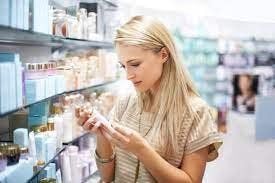
Tránh tiếp xúc với các thành phần độc hại trong mỹ phẩm bằng cách giảm sử dụng chúng.
3. Alternatives and tips to avoid toxins
We can avoid exposure to harmful ingredients in cosmetics by reducing their use or switching to safer alternatives. The following steps can help you reduce or avoid the use of harmful cosmetic ingredients:
In a cosmetic product should use the one that contains few ingredients. Check cosmetic ingredients before buying and using. Make cosmetics like body scrubs and face masks at home with simple food ingredients. Be careful with products that are advertised or advertised as "pure", "organic" or "natural" because they are not necessarily safer. Use products that have been certified organic by reputable organizations. You can turn to cruelty-free alternatives to all types of makeup, including mascara, lip and eye products, foundation, concealer, blush... Cosmetic companies don't need the help. FDA approval before selling their products, a lot of makeup can contain harmful chemicals, so it's up to you to decide which products are safe to use. You should avoid products that contain the ingredients listed in this article, in order to reduce your exposure to harmful chemicals from cosmetics. At the same time, switch to using non-toxic makeup products to protect your health.
Please dial HOTLINE for more information or register for an appointment HERE. Download MyVinmec app to make appointments faster and to manage your bookings easily.
Reference source: medicalnewstoday.com




